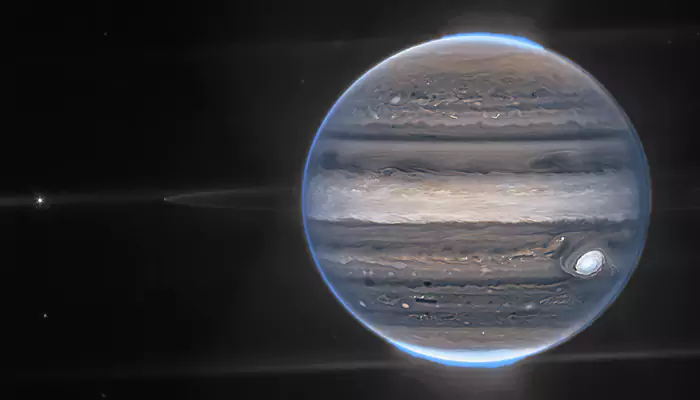Planet Jupiter: Facts that will blow your mind
The largest planet of the solar system has many hidden sides to it.
- Sakshi Agrawal
- 09 May, 2025
- 2 mins ago

Planet Jupiter: Facts that will blow your mind
The largest planet of the solar system has many hidden sides to it.
Named after the Roman king of the gods, Jupiter is the fifth planet from the Sun. With a powerful magnetic field, it has more moons than any other planet in the solar system. While all these normal facts were taught to us in high school, the gas giant has so much more to it.
Below we give you some interesting facts about Jupiter that will blow your mind.
Jupiter has the shortest day among all the planets
Despite its monstrous size and mass, Jupiter is the fastest spinning planet in the solar system. A day on the planet lasts no more than 9 hours and 55 minutes. On the flip side, a year on Jupiter is equal to 11.8 Earth years.
The planet is an oblate shape
Due to the rapid rotation of the planet, Jupiter is oblate shaped with a bulging equator and flattened poles.

It is an asteroid vacuum cleaner
Jupiter lies very close to the Kuiper belt, which is a region of space filled with dwarf planets and asteroids. Due to this, the planet experiences a minimum of 200 times more meteorite impacts. Thus, it helps clean the solar system of any hazardous asteroids and prevents them from coming near Earth.
Jupiter also has rings
Saturn is not the only planet with rings. Jupiter’s ring system was discovered after Saturn and Uranus because it is very light and faint. The rings of Jupiter contain three segments, which are the halo – the inner torus of particles, the main bright rings, and the outer gossamer ring.
You can spot Jupiter with naked eyes
After Venus and the moon, Jupiter is the third brightest object in the solar system. There is a high chance that you looked up to the sky and saw the planet, without being aware of what you were seeing.
The “Great Red Spot”
An Italian astronomer, Giovanni Cassini, found a huge blemish on the south of Jupiter’s equator in 1665. The spot is called “Great Red Spot” today, with many astronomers believing that it is large enough to house 2-3 planets having the same size as Earth’s diameter. The mystery remains why this spot is red in colour. One explanation is that it contains red organic compounds.
Are you shocked or not?










